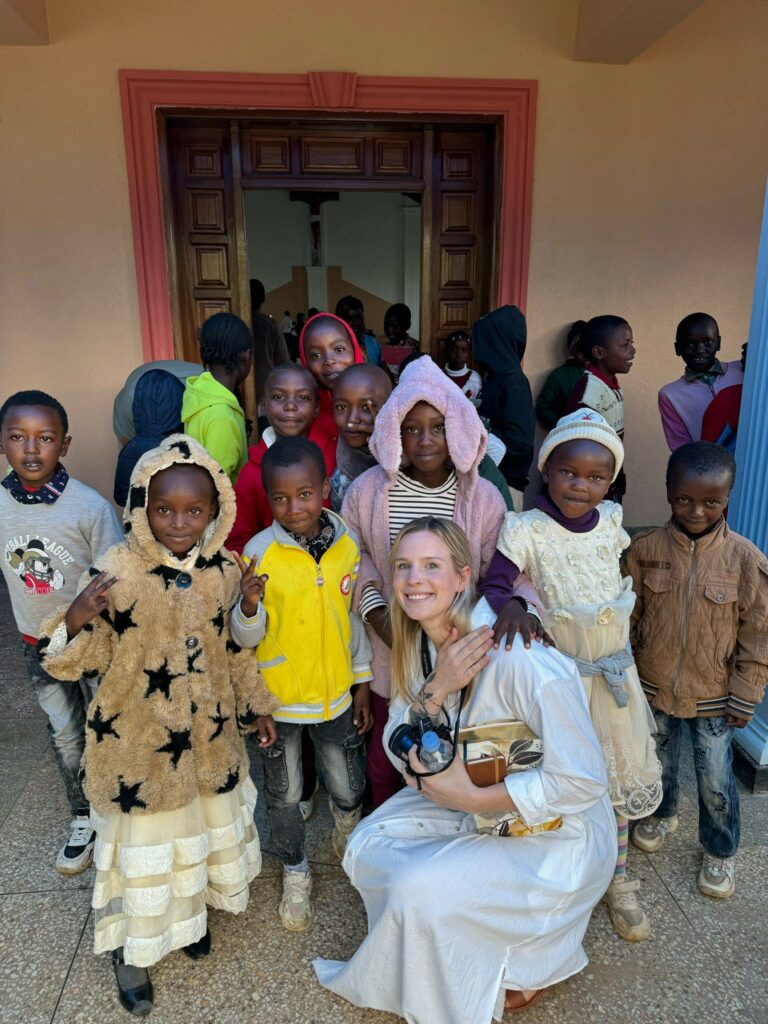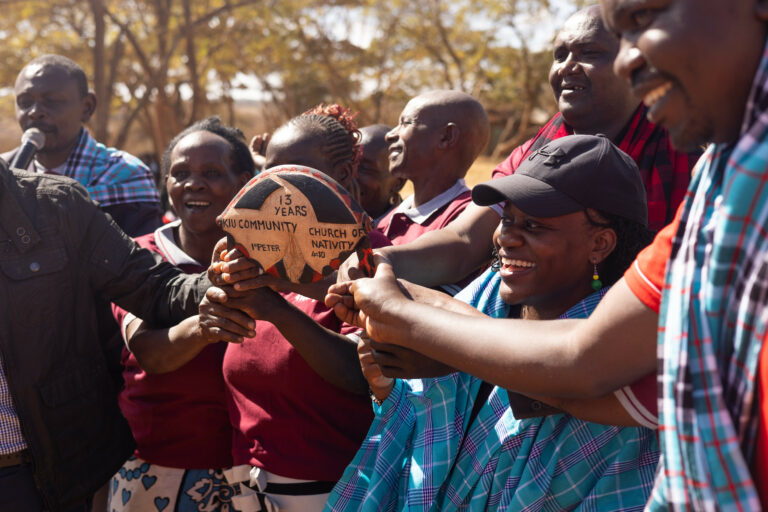If you’ve ever seen the movie Elf, you may be able to recall the scene where Buddy the Elf decorates the entire shopping mall floor from bottom to top with extravagant, and some might even say, extreme Christmas decorations. He builds skyscrapers out of Legos and makes hundreds of paper snowflakes that are strung up all across the ceiling. However, I am willing to bet that even Buddy the Elf, being the expert craftsman that he is, would be incredibly impressed with a Haitian Christmas celebration.
One common Haitian Christmas tradition is decorating with fanals, which are detailed and exquisite paper churches, houses, and animals.
Haitian children will spend months cutting paper boxes, gluing and shaping the fanals into whatever shape their heart desires! The fanals are then lit with candles or Christmas lights during the nighttime. Most homes in Haiti have at least two or three fanals on their porches to showcase their Christmas spirit!
Quite often, Christmas decorations are up by early October, and most businesses will begin blasting classical Haitian Christmas music throughout the season and even into the new year.
More towards the beginning of December, many Haitians begin their hunt for the perfect Christmas tree that will adorn their homes. Some will get creative and cut pine branches to make their own, while others will go to the market and purchase trees brought down from the surrounding mountains. The trees are then brought into their homes and decorated with bright ornaments and lights, just like in the United States. However, one unique difference is that in Haiti, you will often see a large nativity scene placed at the bottom of the tree, right in the center, so that everyone can see. Sometimes the trees are so large and extravagant that they take up most of the living room!
Haitians also enjoy putting on Christmas-themed productions throughout December. These productions are typically about the birth of Jesus, as more than eighty-two percent of Haitian families are Christians. Posters and flyers will be posted throughout markets promoting these shows. And markets are indeed the best place to advertise these productions, as these areas will be hustling and bustling continuously throughout the Christmas season, as many Haitians will be selling goods for those trying to obtain gifts for their loved ones.
People who live in regions throughout Haiti are very grateful for what they have. Celebration with family and friends is highly valued, and attending Christmas services with the whole family is a cherished tradition. Most Haitians celebrate Christmas on December 24th, Christmas Eve, and services usually start an hour or so before midnight. At midnight, the traditional song “Minuit Chrétien” is sung by everyone in the assembly.
However, the celebrations do not end there! After the Christmas Eve services, people come home and eat the main meal of the holiday, which is called ‘reveillon.’ This is a French term meaning ‘to wake up,’ a very fitting name as it is often enjoyed in the early hours of Christmas and usually lasts until the dawn!
On Christmas Day, homes are much quieter as most Haitians will spend the day sleeping off the celebrations of the night before. This day is spent as a day of rest and a time for Haitian children to enjoy their gifts from Tonton Nwèl, or Santa Claus.
Another unique Haitian tradition is having Tonton Nwèl remove the straw set in children’s shoes and fill the space with small toys instead. Many French Christmas traditions include children leaving shoes for Santa to fill with goodies, and Haiti is no exception!
While many Haitians enjoy gathering together with friends and family and gifts in their shoes and under the tree, a true Haitian Christmas would not be complete without delicious foods and drinks! Many Haitian homes will bake small and delicious cakes enjoyed during the Christmas celebrations with a warm cup of Kremas, a traditional Haitian Christmas beverage made with coconut milk, ground nutmeg, evaporated and condensed milk, and vanilla extract. This holiday drink is bound to keep you warm and cozy all year long!
Fun fact: Did you know that, although it is traditionally a treat enjoyed in the Fall here in the United States, a signature dish in Haiti for New Year is Pumpkin Soup!
In Haiti, Merry Christmas in Creole/Haitian is ‘Jwaye Nowe’! French is also commonly spoken in Haiti, so you may also say it in French, ‘Joyeux Noël’!




